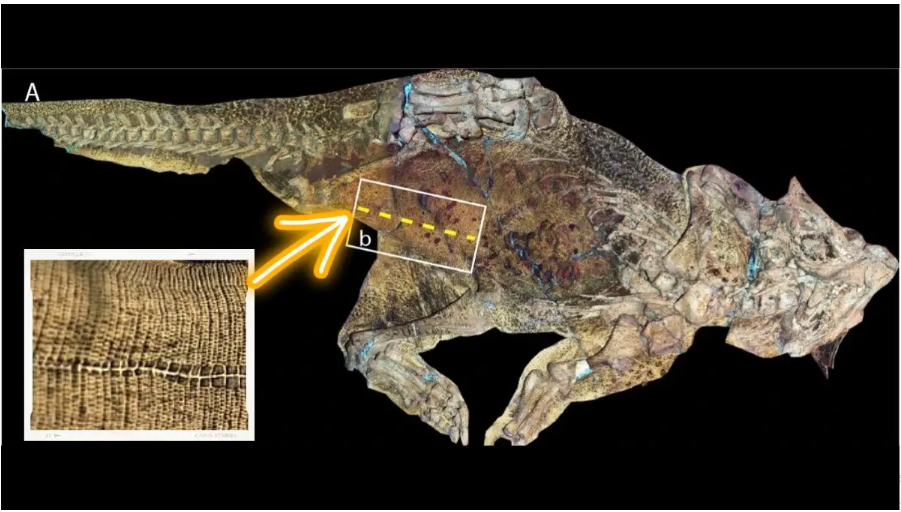Scientists discover the oldest secret in the fossil of a dinosaur that lived during the Cretaceous period in China
Paleontologists have discovered the oldest navel known to science in the fossil remains of a Psittacosaurus found in China.
Scientists from the Chinese University of Hong Kong (CUHK) analyzed a 125-million-year-old fossil that was two meters long and two feet long.
The study, published earlier this month in the journal BMC Biology, used an advanced laser imaging technology to: To analyze the fossilized skin sample of the cytacosaurus or known as the "parrot dinosaur", which lived during the Cretaceous period about 66 million to 145 million years ago.
Scientists found a scar on the fossil skin sample about 10 cm long that did not appear to be caused by external trauma or disease.
Using LSF imaging, the scientists identified the distinctive scales surrounding a long secret scar in a cytacosaurus specimen, similar to some living lizards and crocodiles.
"We call this type of scar a 'belly navel,' and it's smaller in humans," study co-author Michael Pittman of CUHK said in a statement.
While the egg-laying nature of dinosaurs suggests a long navel scar, the researchers say the new study is the first to support this hypothesis with fossil evidence.
Dr. Pittman said: "This specimen is the first dinosaur fossil to preserve a 'navel,' due to its exceptional state of preservation."
Vertebrate paleontologist Phil Bell said: Senior lecturer at the University of New England's School of Environmental and Rural Sciences in Armidale, Australia, said in a statement: "This cytacosaurus specimen is perhaps our most important fossil for studying dinosaur skin."
"But this type of dinosaur still produces surprises that we can achieve using new technology such as laser imaging," he added.
The study's lead researcher, Jacob Venther, said; A paleontologist at the University of Bristol in the UK, told Live Science: "The anatomy is unique, but this navel doesn't look quite like it does in birds, the closest living relatives of dinosaurs."
He added, "It's a special dinosaur cloak, shaped in a perfect and unique way."
Since laying eggs, dinosaurs did not have an umbilical cord, but instead, the dinosaurs' yolk sac was attached directly to the body via a slit-like opening — similar to that of modern-day egg-laying reptiles, scientists say.
The researchers note that this opening closes around the time the animal hatches, leaving a distinct long umbilical scar.
"While this beautiful specimen has been a sensation since it was found in 2002, we have been able to study it in a whole new light using the new laser fluorescence imaging, which reveals the scales in astonishing detail," said Dr. Pittman.
Scientists say the Psittacosaurus specimen, displayed at the Senckenberg Museum in Germany, "is perhaps the most important fossil for studying dinosaur skin".
https://www.arageek.com/news/dinosaur-oldest-belly-button?fbclid=IwAR1X0_n4OtadIceOQhpSdMS4y4FmHbxRpNKXTi521CcK-9jsYpXsGvLrqPk


